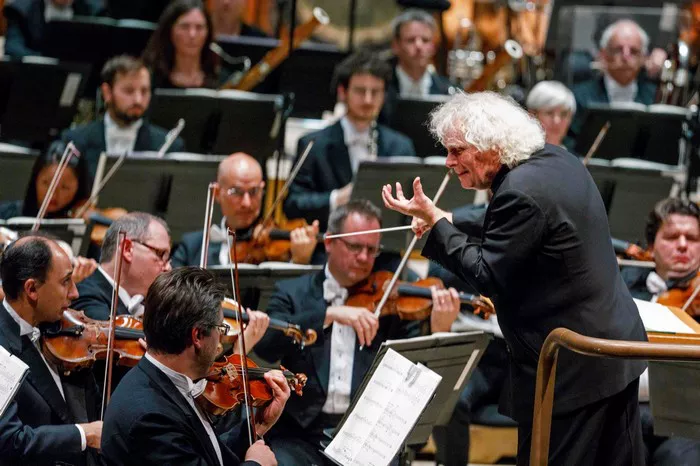Classical music, with its rich history and profound compositions, stands as a testament to the timeless beauty of human expression through sound. Ludwig van Beethoven, a towering figure in the world of classical music, has left an indelible mark on the genre with his revolutionary compositions. One of his notable masterpieces is Symphony No. 6, a work that transcends time and transports listeners into the serene world of pastoral landscapes and musical storytelling.
Understanding Classical Music
Classical music, often considered the epitome of musical sophistication, spans centuries of artistic expression. Rooted in the traditions of Western art music, classical compositions are characterized by their structural complexity, harmonic depth, and orchestral arrangements. The genre encompasses a wide range of styles, from the grandeur of symphonies to the intimacy of chamber music, each piece telling a unique story through meticulously crafted musical elements.
The beauty of classical music lies in its ability to evoke emotions, stimulate the intellect, and communicate profound ideas without the need for words. It is a language of its own, with composers serving as storytellers, using musical notes and structures to convey a myriad of emotions and themes. Whether exploring the dramatic intensity of a Beethoven symphony or the delicate intricacies of a Mozart sonata, classical music invites listeners to engage in a contemplative and immersive experience.
Understanding Ludwig van Beethoven
Ludwig van Beethoven, a German composer born in 1770, is widely regarded as one of the most influential figures in the history of classical music. His life and work spanned the transition between the Classical and Romantic eras, and he played a pivotal role in pushing the boundaries of musical expression. Beethoven’s compositions are known for their emotional depth, innovative use of form, and a relentless pursuit of individuality.
Beethoven’s personal life, marked by his struggle with deafness, added a layer of complexity to his music. Despite his profound hearing loss, he continued to compose some of his most iconic works, defying the limitations imposed by his physical condition. Beethoven’s Symphony No. 6, also known as the “Pastoral Symphony,” exemplifies his ability to weave personal experiences, love for nature, and artistic innovation into a seamless musical tapestry.
Classical Music in the Hands of Beethoven: Symphony No. 6
1. The Pastoral Symphony: A Musical Journey through Nature
Beethoven’s Symphony No. 6 in F major, Op. 68, commonly known as the Pastoral Symphony, stands as a testament to the composer’s love for nature and his desire to evoke vivid imagery through music. Premiered in 1808, the symphony is a departure from the intensity of Beethoven’s other works, offering a pastoral, serene landscape that unfolds in five movements.
The first movement, “Allegro ma non troppo,” introduces the listener to a serene countryside. The gentle rustling of leaves and the flowing melodies of the strings create an idyllic scene, transporting the audience to the heart of nature. Beethoven’s use of sonata-allegro form in this movement establishes the groundwork for the symphony’s narrative structure.
In the second movement, “Andante molto mosso,” the listener is carried away by the flowing river of music. The strings and woodwinds depict the babbling brooks and flowing streams, while the horns and trumpets add a sense of grandeur to the natural landscape. Beethoven’s mastery in orchestration shines through as he captures the essence of the outdoors with vivid sonic colors.
2. The Merry Gathering: Beethoven’s Scherzo
The third movement, a lively scherzo titled “Allegro,” introduces a joyous gathering of country folk. The playful dance-like rhythms and spirited melodies mirror the merriment of a rural celebration. Beethoven’s choice of triple meter and spirited tempo infuses the symphony with a sense of exuberance, making it a delightful interlude within the overall narrative.
The fourth movement, “Allegro,” takes the listener into a stormy episode. The tempestuous orchestral outbursts and dramatic shifts in dynamics paint a vivid picture of a thunderstorm. Beethoven’s use of timpani, brass, and strings creates a sense of tumult, with flashes of lightning and rolls of thunder permeating the musical landscape. The storm eventually gives way to a serene aftermath, symbolizing the cleansing power of nature.
3. Shepherd’s Song: A Celestial Finale
The final movement, titled “Allegretto,” brings the symphony to a peaceful and optimistic conclusion. Representing the shepherd’s song of thanksgiving, Beethoven captures the gratitude and tranquility that follow the storm. The delicate interplay of melodies and the use of folk-like motifs create a sense of unity and harmony, leaving the listener with a profound sense of serenity.
See Also: Ludwig van Beethoven’s Piano Sonata No. 14
Conclusion
In the grand tapestry of classical music, Beethoven’s Symphony No. 6 stands as a masterpiece that transcends its time and continues to captivate audiences across the centuries. The symphony’s unique blend of narrative storytelling, emotional depth, and innovative orchestration showcases the genius of Beethoven and his ability to push the boundaries of classical music.
As we delve into the world of classical music, we find that each composition is a window into the soul of the composer, a reflection of the cultural, social, and personal context of its creation. Beethoven, with his Symphony No. 6, invites us to embark on a journey through the pastoral landscapes of his imagination, where the beauty of nature and the power of music converge in perfect harmony.
In understanding classical music, we discover not only a rich heritage of artistic expression but also a profound means of connecting with our own humanity. The enduring legacy of composers like Beethoven reminds us that classical music is not a relic of the past but a living, breathing art form that continues to inspire, challenge, and uplift the human spirit. As we listen to the symphonic tales of Beethoven, we are reminded that classical music, with its timeless beauty, has the power to transcend the limitations of language and speak directly to the soul.

